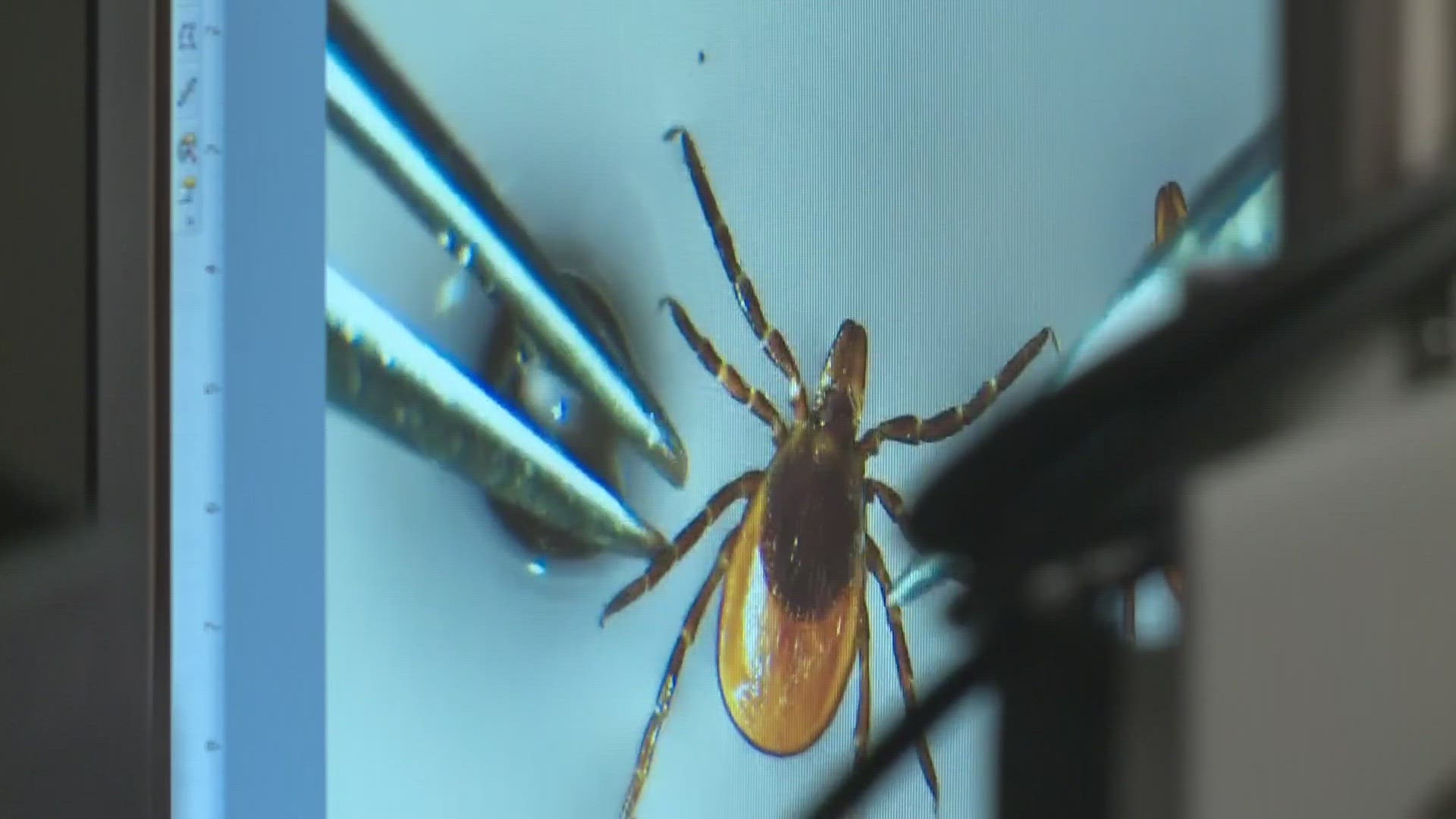MAINE, Maine — Welcome to day two of tick week, where we bring you the latest information on ticks in Maine and the diseases they carry.
Health officials are warning about a sharp rise in cases of a rare tickborne disease that can be more severe than Lyme disease.
It's called babesiosis, and the U.S. Centers for Disease Control and Prevention recently added Maine to a list of New England states where the potentially deadly coinfection is present in our state. Federal health officials say cases of the tickborne illness have skyrocketed by more than 1,400 percent over an 8-year period. Symptoms can appear similar to Lyme, but there are distinct differences. Additionally, they are treatable if caught early. But for one Maine family tick this rare disease has turned their life upside down.
In this household, three generations have been greatly impacted by tick-borne illness.
"Muscle soreness, headaches, I had eye sensitivity," Brenda LeClerc said.
LeClerc, her daughter Malorie Rich, and two of her granddaughters, Paige and Hope, all have Lyme disease and multiple coinfections, including anaplasmosis and babesiosis.
Brenda, Malorie, and Paige never found an embedded tick or had the distinctive bullseye rash pattern. Each had different symptoms over a several-year span dating back to 2015. Brenda experienced severe respiratory problems. For Malorie, a mother of three, symptoms led her to not able to get out of bed.
"I had a lot of neurological symptoms. My heart was impacted. [I had] heart palpitations," Malorie Rich explained.
Paige experienced digestive problems, but she, her mother, and her grandmother are improving thanks to naturopathic treatment.
For this family, it's been an incredibly difficult path to get the correct diagnosis and treatment after each initially tested negative for Lyme and other tickborne illnesses on standardized blood tests.
"Do you feel if you hadn't advocated for yourself and your health, it may have been a different story? I am not sure I would not be here today," Brenda said with emotion in her voice.
Cases of anaplasmosis and babesiosis, which experts consider rare, are on the rise in Maine.
Like Lyme disease, both diseases are carried by deer ticks. According to the U.S. Centers for Disease Control and Prevention, prevalence of babesiosis has skyrocketed from nine reported cases in 2011 to 138 in 2019. In 2022, there were 192 confirmed cases of babesiosis.
Dr. Scott Melton treats infectious diseases at Northern Light Infectious Disease Care. He said babesiosis symptoms can include fever, chills, lethargy, joint pain, and body aches symptoms that can appear to overlap with Lyme, but there is no distinctive bullseye rash. Because of the similarities, a correct diagnosis can be tricky. While Lyme and anaplasmosis can be treated with a course of doxycycline antibiotics, that's not the case for babesiosis.
"Unfortunately, babesiosis doesn't respond to that antibiotic, it needs another antibiotic. So, if you are treating your patient and they don't get better in a few days, think about being that babesiosis and treating them for that," Melton explained.
The disease can cause a low red blood count, while anaplasmosis attacks the white blood cells. In extreme cases, if left untreated, both diseases can cause acute respiratory failure, heart, liver and renal failure, or death, especially in elderly patients who have compromised immune systems.
"If you are older and have comorbidities, if your spleen is not working like it should, we should go ahead and treat," Melton said.
"It's not a surprise to those of us working with ticks and tickborne illnesses. We have seen cases of babesiosis dating back to 2001," Griffin Dill, the manager of the University of Maine Cooperative Extension Tick Lab, said.
At the lab, researchers have been tracking babesiosis in Maine for more than two decades. Dill says cases were about five to 10 cases per year until 2013, when the numbers jumped to 30 to 40 cases per year.
"Now we are seeing a couple hundred a year of babesiosis in the state of Maine," Dill added.
Dill said that number could be even higher, because cases can go unreported. Researchers say anaplasmosis is regularly occurring in Maine as cases continue to spike. The Maine Center for Disease Control and Prevention first reported a 600 percent spike in cases of Anaplasmosis in 2017 over a three-year period, and that trend is continuing with 822 cases last year. Researchers say exposure to deer ticks also are putting more people at risk for co-infections, not just Lyme.
"Somewhere around 1 to 2 percent of the ticks we test for are co-infected with all of the pathogens," Dill explained.
As for this family, Brenda said it is heartbreaking to see her granddaughters and daughter be ravaged by tickborne infections. But they will always take precautions.
"We always do tick checks. The girls have done it their whole lives. We know to look behind their ears and in their hair," Malorie explained.
Maine health officials say there is no need to panic over the US CDC report, but it underscores the importance of protecting yourself and your pets when headed outdoors.
If you do find an attached tick, remove it immediately and send the tick to the University of Maine tick lab for testing in a sealed jar, preferably with rubbing alcohol to kill and preserve it.

